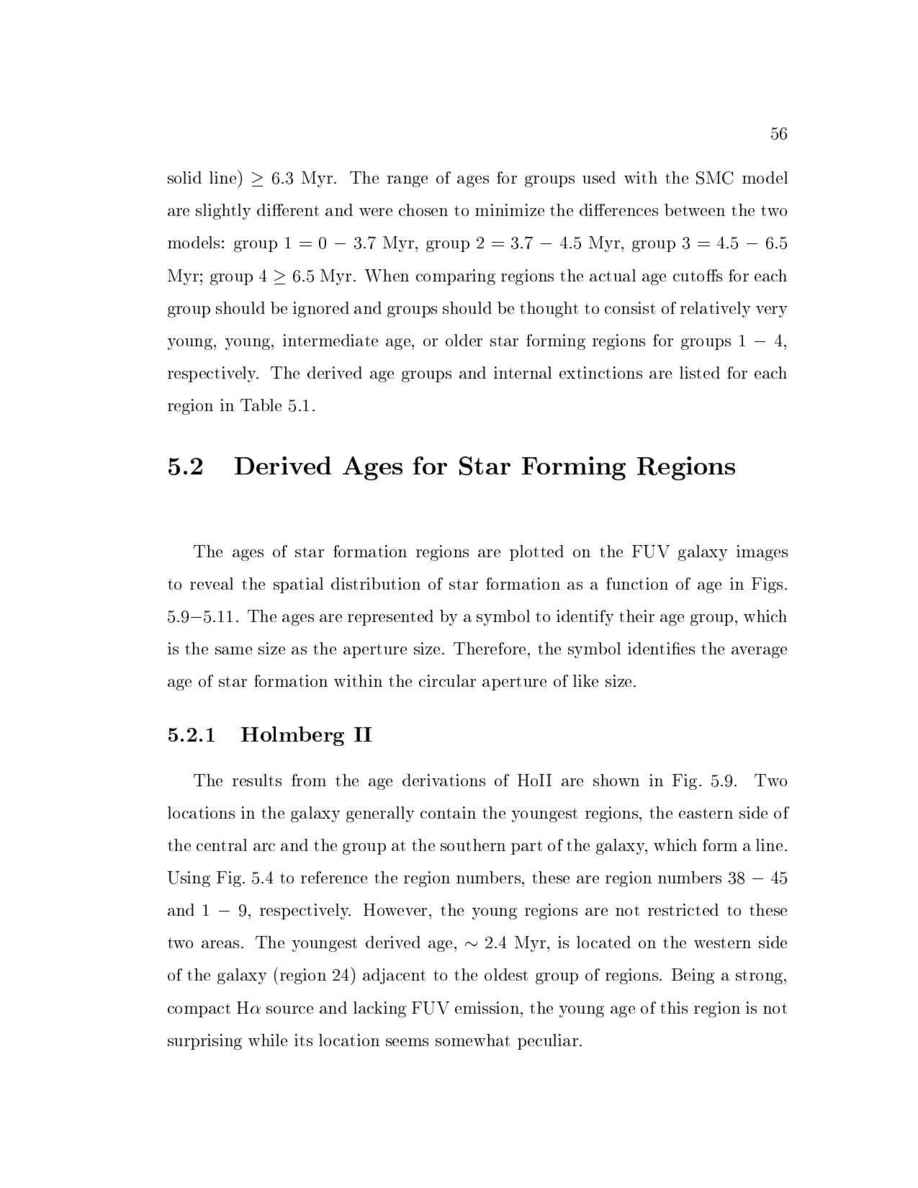
56
solid line
6.3 Myr. The range of ages for groups used with the SMC model
are slightly di erent and were chosen to minimize the di erences between the two
models: group 1 = 0
,
3.7 Myr, group 2 = 3.7
,
4.5 Myr, group 3 = 4.5
,
6.5
Myr; group 4
6.5 Myr. When comparing regions the actual age cuto s for each
group should be ignored and groups should be thought to consist of relatively very
young, young, intermediate age, or older star forming regions for groups 1
,
4,
respectively. The derived age groups and internal extinctions are listed for each
region in Table 5.1.
5.2 Derived Ages for Star Forming Regions
The ages of star formation regions are plotted on the FUV galaxy images
to reveal the spatial distribution of star formation as a function of age in Figs.
5.9
,
5.11. The ages are represented by a symbol to identify their age group, which
is the same size as the aperture size. Therefore, the symbol identi es the average
age of star formation within the circular aperture of like size.
5.2.1 Holmberg II
The results from the age derivations of HoII are shown in Fig. 5.9. Two
locations in the galaxy generally contain the youngest regions, the eastern side of
the central arc and the group at the southern part of the galaxy, which form a line.
Using Fig. 5.4 to reference the region numbers, these are region numbers 38
,
45
and 1
,
9, respectively. However, the young regions are not restricted to these
two areas. The youngest derived age,
2
:
4 Myr, is located on the western side
of the galaxy region 24 adjacent to the oldest group of regions. Being a strong,
compact H source and lacking FUV emission, the young age of this region is not
surprising while its location seems somewhat peculiar.
